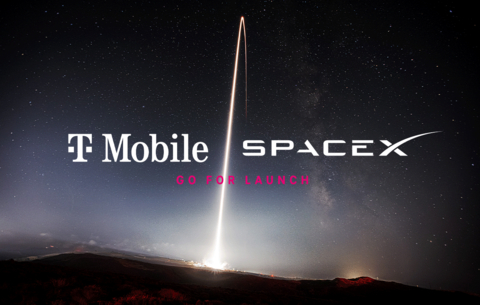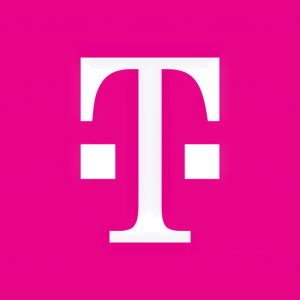First SpaceX Satellites Launch for Breakthrough Direct to Cell Service with T-Mobile
- None.
- None.
Insights
The collaboration between T-Mobile and SpaceX to integrate Starlink satellite technology into T-Mobile's network is a pioneering move that could redefine connectivity standards. The project aims to address a critical issue in telecommunications: providing reliable service to remote and traditionally underserved areas, which is often hindered by geographical and infrastructural challenges.
This initiative could lead to significant competitive advantages for T-Mobile by expanding its coverage footprint and potentially attracting a new customer segment that requires robust connectivity in remote locations. The ability to offer service in areas previously considered 'dead zones' could disrupt the market by setting a new benchmark for universal coverage. However, the success of this venture will heavily depend on the reliability and performance of the satellite-to-cell technology, which is still in its nascent stages.
Long-term implications for the industry include possible shifts in rural and remote area telecommunications strategies among competitors, as well as the potential for new regulatory considerations given the innovative use of satellite technology in conjunction with traditional cellular networks.
The announcement of the successful launch of Starlink satellites equipped with Direct to Cell capabilities represents a significant capital investment and technological advancement for T-Mobile. This move is likely to be closely monitored by investors, as it could have far-reaching implications for T-Mobile's operational costs and revenue streams.
Initially, the costs associated with satellite launches and technology development may weigh on financials. However, if the service proves to be effective and reliable, it could open up new revenue opportunities and possibly reduce dependency on terrestrial infrastructure investments in the long run. Moreover, the strategic partnership with SpaceX could enhance T-Mobile's brand positioning as an innovator in the telecommunications space, potentially impacting its stock valuation positively.
Investors should watch for customer adoption rates and the operational performance of this new service as key indicators of its financial impact. The collaboration may also prompt responses from competitors, potentially leading to increased capital expenditures industry-wide as others seek to match or exceed the new standard of coverage.
The introduction of Direct to Cell satellite technology in partnership with SpaceX could significantly alter consumer expectations and demands within the telecommunications market. Consumers in rural and remote areas, as well as industries that operate in such environments, stand to benefit greatly from the enhanced connectivity.
Market research will need to focus on the adoption curve of this technology and its impact on consumer behavior. There's potential for increased customer loyalty for T-Mobile due to the added value of ubiquitous connectivity. Furthermore, this could catalyze innovation in sectors like agriculture, mining and maritime, which rely on consistent communication capabilities.
Understanding the demographic and psychographic profiles of the target market for this service will be crucial for T-Mobile's marketing strategies. The partnership's success could also influence the development of new products and services tailored to the needs of consumers who prioritize connectivity in remote locations.
Major step forward in companies’ vision to create truly universal coverage by pairing SpaceX’s Starlink satellite technology with T-Mobile's industry-leading network
Five international partners have joined T-Mobile and SpaceX on their quest for global connectivity

Major step forward in companies’ vision to create truly universal coverage by pairing SpaceX’s Starlink satellite technology with T-Mobile's industry-leading network. Five international partners have joined T-Mobile and SpaceX on their quest for global connectivity (Graphics: Business Wire)
“Our mission is to be the best in the world at connecting customers to their world and today is another step forward in keeping our customers connected even in the most remote locations for added peace of mind when they need it most,” said Mike Katz, President of Marketing, Strategy and Products, T-Mobile. “Today’s launch is a pivotal moment for this groundbreaking alliance with SpaceX and our global partners around the world, as we work to make dead zones a thing of the past.”
With well over half a million square miles of the
Today marks the first of many Starlink satellite launches to come that will include Direct to Cell capabilities. Initially, the service will begin with text messaging, with voice and data coverage to follow in the coming years.
“The launch of these first Direct to Cell satellites is an exciting milestone for SpaceX to demonstrate our technology," said Dr. Sara Spangelo, Sr. Director of Satellite Engineering. "We look forward to rapidly scaling up Direct to Cell with our partner operators around the world and rolling out messaging service for T-Mobile customers!”
T-Mobile and SpaceX’s shared vision is to provide truly universal coverage and last year, they issued an open invitation to wireless providers worldwide to expand globally with reciprocal roaming. As of today, five wireless providers are already onboard to launch Direct to Cell technology including KDDI (
For more details at T-Mobile, head to t-mobile.com/coverage/network.
Some uses may require certain plan or feature; see T-Mobile.com.
Cautionary Statement Regarding Forward-Looking Statements
This communication contains certain forward-looking statements, including T-Mobile’s plans to increase cell phone coverage while utilizing Starlink, and offer such coverage to its customers. Forward-looking information is based on management’s estimates, assumptions and projections, and is subject to significant uncertainties and other factors, many of which are beyond the Company’s control. Important risk factors could cause actual future results and other future events to differ materially from those currently estimated by management, including, but not limited to: the time and costs relating to building out the network.
About T-Mobile US, Inc.
T-Mobile US, Inc. (NASDAQ: TMUS) is America’s supercharged Un-carrier, delivering an advanced 4G LTE and transformative nationwide 5G network that will offer reliable connectivity for all. T-Mobile’s customers benefit from its unmatched combination of value and quality, unwavering obsession with offering them the best possible service experience and undisputable drive for disruption that creates competition and innovation in wireless and beyond. Based in
View source version on businesswire.com: https://www.businesswire.com/news/home/20231214061627/en/
Media Contacts
T-Mobile US, Inc. Media Relations
MediaRelations@t-mobile.com
Investor Relations Contact
T-Mobile US, Inc.
investor.relations@t-mobile.com
https://investor.t-mobile.com
Source: T-Mobile US, Inc.
FAQ
What is the significance of T-Mobile and SpaceX's joint initiative in launching Starlink satellites?
How will T-Mobile's network leverage SpaceX's constellation of satellites?
Who has joined T-Mobile and SpaceX on their quest for global connectivity?







